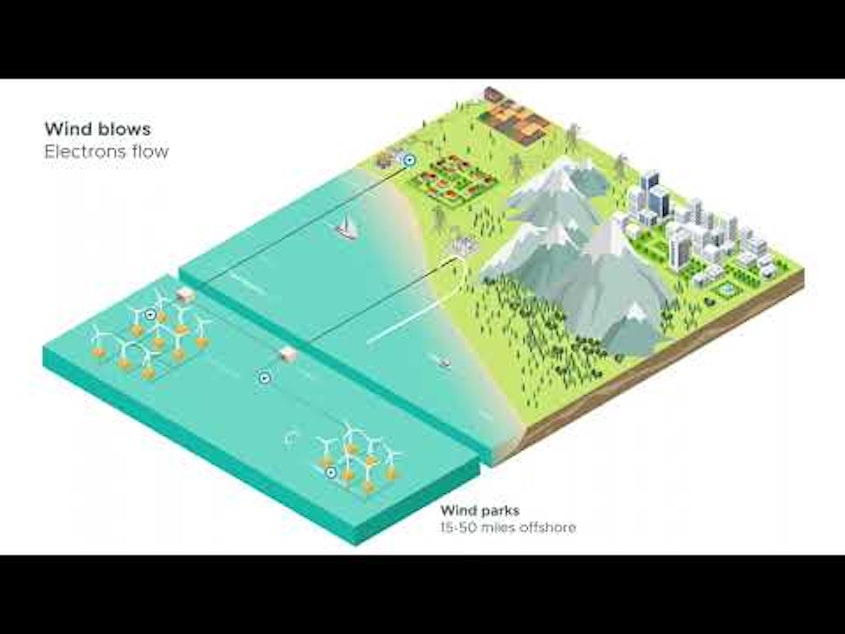NW scientists study the promises – and challenges – of offshore wind

With the climate rapidly changing, researchers are trying to find ways to make clean energy developments less expensive and easier to build. For the Northwest, offshore wind power could play a critical role, but it also presents major challenges.
One of the lead research groups in this area is Pacific Northwest National Laboratory. This year, they received federal funding to build upon an earlier study that reviewed obstacles to fully developing offshore wind along the West Coast.
According to the national lab, floating turbines off the coast of Oregon and California could power millions of homes. But even if all that energy were harnessed, there’s no easy way of plugging it into the existing grid, said Travis Douville, wind energy grid integration lead for the lab.
“I love the analogy of getting a blood transfusion through your fingertips,” Douville said. “You would never pick that, right? That would never be the opportune way to interconnect and transmit a significant amount of offshore wind, through these fragile and relatively small coastal transmission links.”
PNNL is studying how to improve that process.
Sponsored
“We have world class resources off the coast of southern Oregon and northern California in particular, which is precisely a region where we don't have much transmission on shore,” Douville said.
Building the turbines would also be difficult. On the West Coast, the continental slope drops off sharply – meaning the water gets really deep, really fast. Because of that geography, offshore wind turbines would have to “float.” They’d be anchored to the ocean floor with cables, which would keep them from moving much at all.
“When you get beyond depths of approximately 60 meters, generally, it's not economical to use a fixed bottom foundation for a wind turbine, which is similar to when people think of land-based wind turbines and putting them in the sea floor,” Douville said.
As part of the study, an advisory committee will evaluate potential impacts to coastal communities and marine life from offshore wind.
The research is expected to come out late next year. [Copyright 2023 Northwest News Network]
